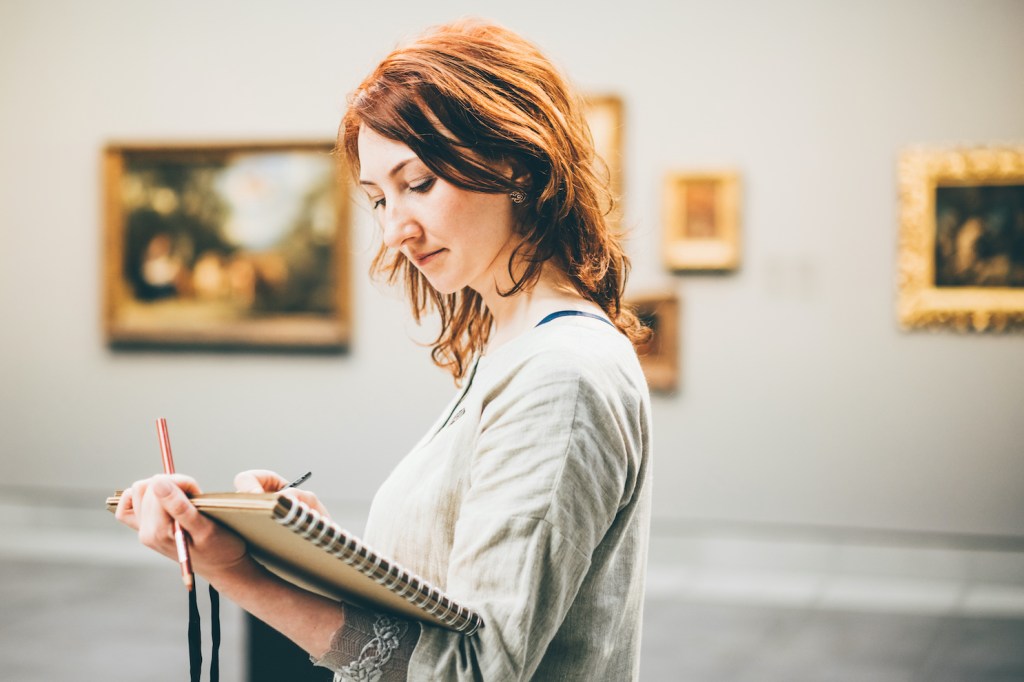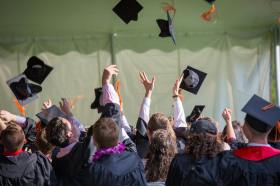In August, Vice-Chancellor of The University of Sydney Professor Mark Scott AO launched the Sydney in 2032 Strategy. The strategy, which addresses disadvantage and the need for support structures and pathways for students, is arguably a leap forward for the university in acknowledging privilege and tackling certain barriers to education which presently shape who gets to be educated.
In ‘[A]n ATAR of 93 at Mt Druitt might be equivalent to 99 in Mosman’: Sydney Uni’s new strategy, Scott states: ‘The roads into the university are wide and smooth from certain schools and certain suburbs’, and reiterates the university’s commitment to support mechanisms as a key objective of the new strategy.
Addressing the National Press Club, Scott spoke of access and opportunity, learning and discovery, and the role of the university in the creation of future leaders. He stated that one of the central aspirational pillars of the new vision is to, ‘create a [university] community that thrives through diversity’, and the desire to ‘tell our story better’.
However throughout the speech on transformational education, research and development, and various examples of successful partnerships and investment in industry, neither the arts nor creative industries warrant a mention, nor do they appear in the strategy.
What is position of the arts in tertiary education?
In 2021, Julian Meyrick, Professor of Creative Arts at Griffith University in Brisbane, published a Monthly article Drama in Hell in which he discussed ‘the descent of creative arts at Australia’s universities’. The article speaks of the ‘fear, exhaustion and resignation’ experienced by those teaching drama courses when ‘departments were downsized, hastily reshaped or cut altogether’.
Meyrick explains that current issues hark back to the Dawkins Reforms, which means that ‘[d]iverse creative arts programs are coming under sustained pressure from standardised budgetary frameworks’. Meyrick listed: ‘Monash, Murdoch, La Trobe, Charles Sturt and Newcastle universities’ among the recent casualties.
In conversation with Meyrick this week, he expressed that Australian universities are continuing to experience ‘major problems’ due to being ‘caught up in economic reductive thinking and administrative rationality’ and have seemingly ‘lost sight of their chief purpose’.
How can the arts position themselves differently?
According to Dolla Shireen Merrillees, Director of Western Sydney Creative at Western Sydney University, their current role and part of the Western Sydney Creative Strategy 2019–2029 is the ‘opportunity […] to sustain and support the growth of Western Sydney’s small-to-medium arts sector’.
Western Sydney Creative’s remit is a whole of university strategy to embed the arts and culture across all disciplines, and in doing this Merrillees poses the question, ‘what is our role in helping to grow that sector, to sustain that sector, to work with that sector, to partner with it and to work with and encourage creatives in in that space?’.
Merrillees doesn’t shy away from the harsh reality that Western Sydney University, ‘closed down its performing and visual arts schools over two decades ago [which] had a profound impact on the growth and the development of Western Sydney’s arts ecosystem’.
She adds, ‘it’s meant is that generations of young people and students in Western Sydney have had, and currently have, no access to comprehensive, high quality, world class arts education in the visual and performing arts’.
According to Merrillees, Western Sydney University is learning from the past in the reshaping of the future, she states, ‘There’s recognition that we need to approach the arts in a different way […] a much more flexible, fluid model […] making sure that the arts [are] integrated into everything that we do’.
In another recent addition, NIDA launched their future focused NIDA Green initiative. In [A] new generation of students are poised to green the world Liz Hughes NIDA CEO stated: ‘As part of NIDA Green, we will create an environmentally conscious community that harnesses the input of people who want to make a difference. Our plan sees sustainability becoming a core part of NIDA’s education and we will change the way we create and produce creative works at NIDA to lead and cultivate green industry practice’.
This marks a new phase of NIDA’s commitment to change and engagement in sustainability. It also opens the question of the role of the tertiary arts institution in the broader society.
What then is the role of a university today?
If one of the roles of tertiary institutions is to educate and equip the future leaders of tomorrow with knowledge and skills — listening, critical thinking, collaboration, problem solving — how does the arts and humanities arguably underpin all tertiary education?
Cat Hope, Professor of Music at Monash University in Melbourne, argues ‘Learning and playing music makes us better people. It makes us better citizens’. Hope adds that much of the learning goes beyond musicianship, isn’t ‘explicit in the curricula’, but is intrinsically important, such as ‘playing in ensembles [which] teaches us how to interact with each other’.
Hope also argues that ‘tertiary education gives us access to materials about the past, develop skills to think critically about those materials and perhaps confront the future differently’.
Meyrick argues that a key function of university education is to teach students to courageously think for themselves; and universities have a ‘very strong duty to supply a safe space for a wide range of views and to promote tolerant, civil and open debates’.
In terms of what universities have a responsibility to offer, Meyrick argues it goes beyond curricula, ‘Whatever you swap in and whatever you swap out […] you still need to attend to the values and skills around critical thinking […] otherwise all you’re doing is changing the reading list. Quite frankly that’s not enough’.
Meyrick adds, ‘I mean, curricula change naturally. Whether you’re teaching the creative arts or […] mathematics, the values of collegiality, openness, civility, respect for other people, respect for other points of view — they’ve got to hold [regardless]’.
More than being an ‘add-on’ Merrillees argues, ‘that the humanities and arts perspective are skills that are required by industry across all disciplines — critical thinking, social capital, problem solving — does come from the arts and humanities. We want to position [the arts] so that it is embedded across industry and business and it becomes a core part of business’.
According to Merrillees the role of Western Sydney Creative is also ‘advocating for strategic long term thinking for the sector […] policy to grow and sustain arts and culture’.
What are barriers to education?
There are complex and multiple barriers to tertiary education across the arts and beyond.
Hope argues that ‘education is a very complex web of different factors’ adding ‘it’s difficult to comprehend everyone’s experience of, or needs from it’.
Hope, Merrillees and Meyrick spoke of barriers such as: finance, digital access, first-in-family, proximity, exposure, philosophy and class. Hope argues, ‘[i]f you’re in a certain strata of society, you go a private schools and it’s just a quick short jump really from there to Hamer Hall’.
Hope, who specialises in music, speaks of gendered ‘style barriers’ inherent in many music teaching and learning spaces and the difficulty for teachers evolving their intrenched approaches and teaching methods beyond how they were taught themselves.
Hope says universities need ‘awareness of the different pathways to tertiary education — from regional areas, for example’. She asks if exposure and information sharing could be presented and distributed differently to attract a diverse student cohort.
Hope suggests that ‘we’re not showing the right information, the right way’ stating the importance of language and understanding the traps of ‘just talking to each other’ attracting the same or similar types of people.
What is the social contract between the tertiary education and arts sector?
The role of the university is not limited to curricula specific engagement, it also lies in the ability to embed arts and culture in everything it does; to demonstrate leadership, advocate on behalf of the sector, initiate and drive critical civil debate, engage arts and culture as the fabric of social cohesion and the very bedrock of education and communication.
Or as Merrillees says, ‘the arts are really critical to being able to tell the story of our identities that tell the stories of our communities […] in a culturally and linguistically diverse way’ adding crucially that, ‘the arts have the ability to bring research to life, to give it a voice and to articulate research in a way that makes it accessible to the community and to the public’.





